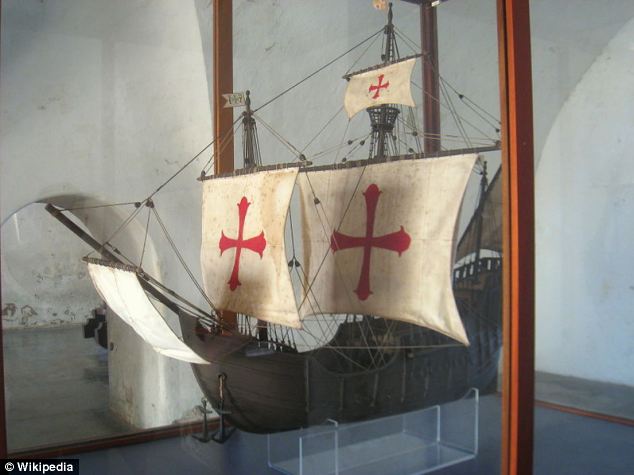
One particular historian, Manuel Rosa, has spent nearly 20 years trying to trace the ship. One of his theories is that the Santa Maria was actually dragged up onto the beach of Caracol on purpose. Columbus then re-christened it Natividad and shot the ship side-to-side by a cannon on January 2, 1493. Rosa believes that the cannoning was intentional and designed to maroon the ship.
Rosa has three theories as to why the Santa Maria was marooned. The first is that Columbus could leave behind whoever had traveled with him, the second would be so Spain would have to send a rescue fleet, and the third was because the Santa Maria would’ve been too dangerous to use for the homeward journey, especially during the winter.
What is interesting is that according to a new book written about this theory, Columbus took all of the pilots with him so that the other crew members would not know how to navigate back to Spain if they tried. Rosa claimed that Columbus did all of this to prevent scrutiny and hide his tracks after he discovered the new world. This allowed Portugal to keep control of the spice trade in India, denying access for Spain to use the same route. He also said that by marooning his own ship, Columbus could report back with whatever story he wanted to tell.
The recent information about someone having discovered the Santa Maria surprised Rosa. He believes it’s absurd, due to the fact that if it were true, historians would have gotten that information from historical documents. Rosa said that obviously people are not understanding the information written in Columbus’ ship log, or the ruse he was playing. If anyone had read those documents they would know that the ship was marooned and later burned to ash by the natives.
However, the man who discovered what he believes is the Santa Maria is also quite confident. Barry Clifford had previously found a complete pirate ship before finding the remains of what he believes is the Santa Maria. He said he believes it is the Santa Maria because the geographical and underwater topography match the spot where Columbus supposedly left his ship. Clifford and a team of archaeologists are hoping that the Haitian government will allow them to look into the ship further to see if there is still a name visible on the wreckage.

It is said that during Columbus’ first voyage in 1492 he was near Hispaniola when the Santa Maria ran aground and was smashed to pieces. After it ran aground, Columbus left men behind to establish a fort and set sail in the Nina for Spain.
According to a researcher working with Clifford, the entire story can be backed up. They also believe that they know the location of the fort on the Haitian coast. Interestingly, Clifford had apparently taken photos of the Santa Maria nearly 10 years ago, but had no idea that it was the boat everyone has been looking for.
Clifford’s team has found several items such as the cannon, however the site it had already been looted. He and his team are working with the Haitian government to see that what is left of the wreck is properly preserved and protected. He is still hoping that once they get the go-ahead to excavate, it will show evidence of truly being Columbus’ ship.
It is believed when Columbus and his men first reached the island they still suffered from the scurvy they fell victim to while sailing across the Atlantic. The disease then ended up killing a majority of the colonizers, which was the demise of the La Isabela’s settlement. It only lasted four years and was eventually abandoned. Researchers have found evidence of scurvy in 27 skeletons from the settlement, which is now part of the Dominican Republic. The colonizers beat the sickness before they died out completely, but by that time it had wiped out many of them.
Source: http://www.dailymail.co.uk/sciencetech/article-2656557/Was-ship-Columbus-discovered-New-World-burnt-firewood-New-theory-refutes-claim-shipwreck-Santa-Maria.html